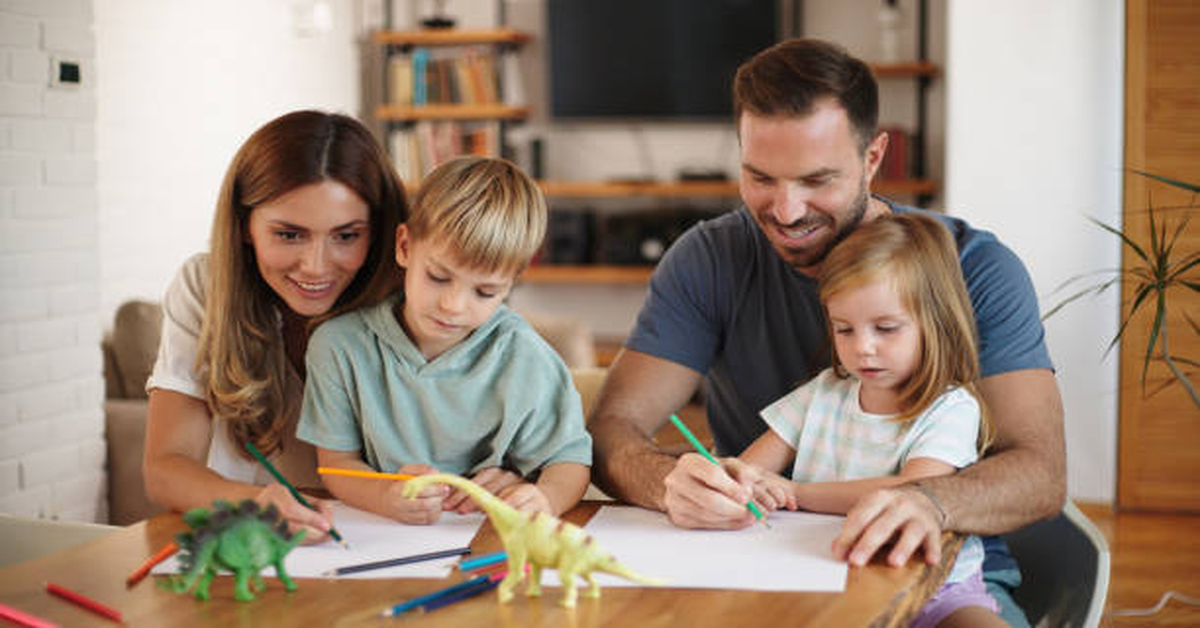
Parenthood is one of life’s most beautiful adventures, filled with laughter, learning, and love. Yet, in today’s fast-paced world of screens and schedules, families often struggle to find meaningful ways to spend time together. “Things to do with kids” is not simply about filling time—it’s about shaping memories, nurturing curiosity, and creating emotional connections that will last for a lifetime. Whether indoors, outdoors, at home, or while traveling, there are countless opportunities to bond, teach, and grow together.
This article explores a wide range of creative, educational, and recreational activities that parents, guardians, and caregivers can enjoy with children of all ages. The goal is not only to entertain but also to inspire a sense of wonder, responsibility, and empathy in young minds. We’ll look at how fun can merge with learning, how play can foster growth, and how even simple family moments can become the foundation of lifelong values.
1. Why Shared Activities with Kids Matter
Before diving into specific ideas, it’s important to understand why engaging with children through activities is vital. Childhood is a stage of exploration and discovery, and every shared experience becomes a tool for learning—socially, emotionally, and intellectually.
Emotional Development
Spending quality time with kids fosters security and self-esteem. When children feel that adults genuinely enjoy their company, they develop a sense of belonging and confidence in expressing themselves. Simple games, laughter, and shared creativity make them feel valued.
Cognitive Growth
Interactive activities—whether solving puzzles, reading stories, or exploring nature—enhance a child’s ability to think critically and imaginatively. Each moment of curiosity becomes a stepping stone for intellectual growth.
Family Bonding
Strong relationships are built on communication and shared experiences. Family activities create traditions, reinforce values, and open channels of understanding between generations.
| Benefit Area | Impact on Children | Example Activity |
|---|---|---|
| Emotional Health | Builds confidence and empathy | Family storytelling nights |
| Cognitive Skills | Stimulates curiosity and focus | Science experiments at home |
| Social Awareness | Encourages cooperation | Group board games |
| Physical Fitness | Promotes energy and balance | Nature hikes or dance sessions |
2. Indoor Activities: Creativity Within Walls
Rainy days, winter evenings, or simply quiet weekends indoors can become unforgettable with the right activities. Indoor fun need not mean screens or boredom; it can be a workshop of imagination, storytelling, and skill-building.
A. DIY Craft Sessions
Children love creating, and crafting is one of the most rewarding indoor experiences. Using everyday materials like paper, cardboard, glue, and colors, parents can turn the dining table into an art studio.
Ideas include making:
- Paper airplanes or origami animals
- Homemade greeting cards for relatives
- Miniature model houses or clay sculptures
The process teaches patience, precision, and creativity—essential traits for growing minds.
B. Indoor Science Experiments
Curiosity thrives when children see magic in science. Simple experiments like vinegar and baking soda volcanoes, balloon-powered cars, or growing crystals can turn any living room into a laboratory.
Parents can encourage kids to predict outcomes before observing them, nurturing analytical thinking and excitement for STEM subjects.
C. Kitchen Time: Cooking Together
Cooking can be an educational playground. Allowing children to mix, measure, and decorate introduces math, chemistry, and hygiene. Making pizzas, fruit salads, or homemade cookies also promotes healthy eating habits and teamwork.
| Indoor Activity | Skills Developed | Age Suitability |
|---|---|---|
| Crafts and Origami | Fine motor skills, patience | 4+ |
| Science Experiments | Observation, logic | 6+ |
| Cooking Together | Math, teamwork, nutrition awareness | 5+ |
| Board Games | Strategy, social interaction | 4+ |
| Storytime Theatre | Language and confidence | 3+ |
D. Storytelling and Role-Play
Storytelling ignites imagination. Parents can read aloud or create interactive tales where kids play the characters. Adding costumes or puppets turns storytelling into immersive theater, improving communication skills and creativity.
3. Outdoor Adventures: Nature and Movement
Children flourish outdoors. The open world provides textures, sounds, and colors that no gadget can replicate. Outdoor play encourages resilience, teamwork, and curiosity about the natural world.
A. Nature Walks and Scavenger Hunts
A simple walk in the park becomes magical when framed as a discovery adventure. Create a “nature bingo” list—find a pinecone, spot a bird’s nest, or collect three types of leaves. This not only develops observation skills but also fosters environmental appreciation.
B. Gardening Together
Gardening teaches patience and responsibility. Allow kids to choose seeds, water plants, and track growth. Watching a flower bloom or a tomato grow becomes a powerful metaphor for nurturing life and persistence.
C. Sports and Movement Games
Physical play keeps children active and healthy. Activities like cycling, kite-flying, or backyard obstacle courses promote coordination, endurance, and confidence. Families can organize weekly sports challenges like “Sunday Races” or “Family Mini-Olympics.”
| Outdoor Activity | Main Benefits | Best For Ages |
|---|---|---|
| Scavenger Hunt | Curiosity, teamwork | 5–12 |
| Gardening | Patience, eco-awareness | 4–14 |
| Kite Flying | Motor skills, joy | 6–12 |
| Cycling | Strength, balance | 5+ |
| Hiking | Exploration, endurance | 8+ |
D. Community Exploration
Exploring your local area can be just as exciting as faraway trips. Visit nearby museums, farmer’s markets, or nature reserves. Teach children to ask questions, interact respectfully, and record observations in a “family travel diary.”
4. Educational Activities That Feel Like Play
Education does not have to be limited to school. Parents can transform learning into adventure by making it practical, interactive, and joyful.
A. DIY Learning Projects
Create fun experiments to explain everyday concepts—building a solar oven to understand energy, or a homemade compass to explore magnetism.
Children retain knowledge longer when they see real-world application.
B. Reading Adventures
Turn reading into a ritual. Choose a cozy spot, set a reading goal, and make it interactive by discussing the story. For younger kids, picture books enhance vocabulary; for older ones, novels develop empathy and comprehension.
C. Family History Exploration
Children love stories about themselves. Creating a family tree, interviewing grandparents, or looking through old photos connects them to their roots. It also helps them understand belonging and identity.
| Learning Activity | Skill Focus | Learning Outcome |
|---|---|---|
| DIY Science | Analytical skills | Understanding of natural laws |
| Reading Circles | Language, empathy | Better comprehension |
| Family Tree Project | Emotional intelligence | Sense of identity |
| Math with Baking | Measurement, fractions | Practical math mastery |
5. Things to Do on Weekends and Holidays
Weekends and holidays are perfect opportunities for family adventures. These can be small local experiences or planned trips that combine recreation and learning.
A. Day Trips
Plan visits to zoos, aquariums, planetariums, or cultural festivals. Such outings enrich children’s worldview and stimulate curiosity about nature, science, and culture.
B. Camping and Outdoor Living
Camping offers lessons in survival, teamwork, and respect for nature. Teach kids how to set up a tent, identify stars, or cook over a campfire. These experiences build independence and adaptability.
C. Volunteering as a Family
Acts of kindness create purpose. Volunteer at local shelters, clean parks, or participate in food drives. Kids learn empathy, gratitude, and civic responsibility through action.
| Weekend Activity | Core Lesson | Memory Impact |
|---|---|---|
| Zoo Visit | Biodiversity awareness | Long-lasting curiosity |
| Camping | Independence | Strong family bonding |
| Volunteering | Compassion | Sense of purpose |
| Art Workshops | Expression | Creative growth |
6. Screen Time Balance: Healthy Digital Fun
Completely banning screens is neither practical nor necessary. Instead, parents can teach digital mindfulness—using technology for creativity rather than distraction.
A. Educational Apps and Games
Introduce apps that teach coding, art, music, or problem-solving. Games like virtual puzzles, math challenges, or language-learning adventures make screen time productive.
B. Family Movie Nights
Select meaningful films that spark discussion—animated classics, documentaries, or inspiring real-life stories. Encourage kids to share what they learned afterward.
C. Digital Creativity Projects
Use tablets or computers for creative output: making short videos, digital art, or online storytelling journals. This builds media literacy and confidence in self-expression.
| Digital Activity | Learning Area | Positive Effect |
|---|---|---|
| Educational Apps | Math, language | Skill improvement |
| Movie Nights | Reflection | Family bonding |
| Digital Art | Creativity | Self-expression |
| Online Research | Curiosity | Knowledge expansion |
7. Rainy Day and Winter Activities
When outdoor adventures aren’t possible, indoor activities can bring warmth and excitement.
Some timeless favorites include:
- Indoor treasure hunts
- Build-a-fort sessions with blankets and pillows
- Family karaoke or dance contests
- Puzzle competitions
Parents can use rainy days to teach life skills—like organizing rooms, recycling, or cooking warm meals together. It’s about turning ordinary moments into extraordinary bonding opportunities.
8. Teaching Through Play: Building Values
Every game can teach a life lesson. Parents can consciously use playtime to reinforce values like honesty, patience, and cooperation.
| Value | Example Game or Activity | Lesson Learned |
|---|---|---|
| Teamwork | Building a puzzle together | Collaboration |
| Patience | Growing a plant | Persistence |
| Fairness | Board games with clear rules | Sportsmanship |
| Creativity | Story-building games | Expression |
| Empathy | Volunteering | Compassion |
When play is purposeful, it molds not only skills but also character.
9. Seasonal Activities: The Joy of Changing Weather
Each season offers its own treasures of experience:
Spring:
Picnics, gardening, and nature walks. Teach about pollination, plant growth, and the cycle of life.
Summer:
Swimming, sandcastle building, or family road trips. Encourage kids to maintain journals about what they discover.
Autumn:
Leaf art, apple picking, and harvest festivals. Discuss environmental changes and gratitude.
Winter:
Snow sculpting, indoor baking marathons, and reading nights by the fire. Teach warmth, sharing, and reflection.
| Season | Activity Example | Learning Value |
|---|---|---|
| Spring | Gardening | Renewal |
| Summer | Swimming | Health and freedom |
| Autumn | Crafting with leaves | Observation |
| Winter | Storytelling | Connection |
10. Budget-Friendly Activities
Family fun doesn’t require expensive trips. Creativity often costs nothing.
- Neighborhood walks and playground visits
- Library story hours
- Recycling art from household items
- DIY family talent shows
- Star-gazing from the backyard
Affordable activities emphasize love and imagination over material spending, teaching children to appreciate simplicity and resourcefulness.
11. Traveling with Kids: Making Journeys Memorable
Traveling with kids is more than sightseeing—it’s shared discovery. The key is to blend structure with flexibility.
- Involve children in planning. Let them mark destinations on maps or suggest snacks to bring.
- Keep travel journals or scrapbooks.
- Turn learning into play—counting languages on signs, observing landscapes, or identifying landmarks.
Travel becomes both education and adventure, shaping open-minded, culturally aware children.
12. Teaching Responsibility Through Fun
Chores can become learning games. Assign tasks like feeding pets, setting the table, or organizing toys with reward systems. It builds responsibility without feeling like punishment.
Parents can also set up “challenge charts” with points and rewards for acts of kindness, study completion, or helpful behavior.
| Task Type | Fun Twist | Skill Developed |
|---|---|---|
| Cleaning Toys | “Treasure Hunt Cleanup” | Organization |
| Feeding Pets | “Pet Care Tracker” | Compassion |
| Laundry | “Sorting Challenge” | Independence |
| Homework | “Study Adventure Board” | Discipline |
13. Creative and Performing Arts
Art fuels emotional intelligence. Encourage children to paint, dance, sing, or play musical instruments. Organize small family recitals or art shows.
Such activities build self-confidence and teach discipline while nurturing imagination.
14. Family Reflection and Mindfulness Activities
Children benefit greatly from mindfulness and gratitude exercises. Create evening rituals where everyone shares what made them happy that day. Try simple breathing exercises or meditation moments.
These practices build emotional awareness and reduce anxiety in both kids and adults.
Conclusion
At its core, “things to do with kids” is not about keeping them occupied—it’s about raising humans who are creative, kind, and resilient. Whether baking cookies, exploring forests, or reading bedtime stories, every shared activity adds a brushstroke to the painting of a child’s future.
Family life flourishes when fun meets purpose. Time spent together is an investment that pays back in laughter, memories, and emotional growth. Amid the busyness of life, the greatest gift we can give children is not luxury or gadgets—but our time, attention, and imagination.
FAQs
1. What are the best indoor things to do with kids?
Indoor crafts, cooking together, storytelling, and science experiments are enriching. They develop creativity, patience, and learning in a fun environment.
2. How can outdoor activities benefit children?
Outdoor play enhances physical health, teamwork, and environmental awareness. Activities like hiking, cycling, or gardening promote confidence and curiosity.
3. What are budget-friendly family activities?
Neighborhood walks, library visits, DIY crafts, or backyard games provide joy and learning without financial pressure.
4. How can I balance screen time for my kids?
Set daily limits, introduce educational apps, and prioritize offline activities like reading, art, or outdoor play.
5. What is the most important goal of family activities?
The goal is connection. Shared experiences help children grow emotionally secure, intellectually curious, and socially responsible.







